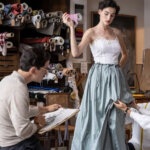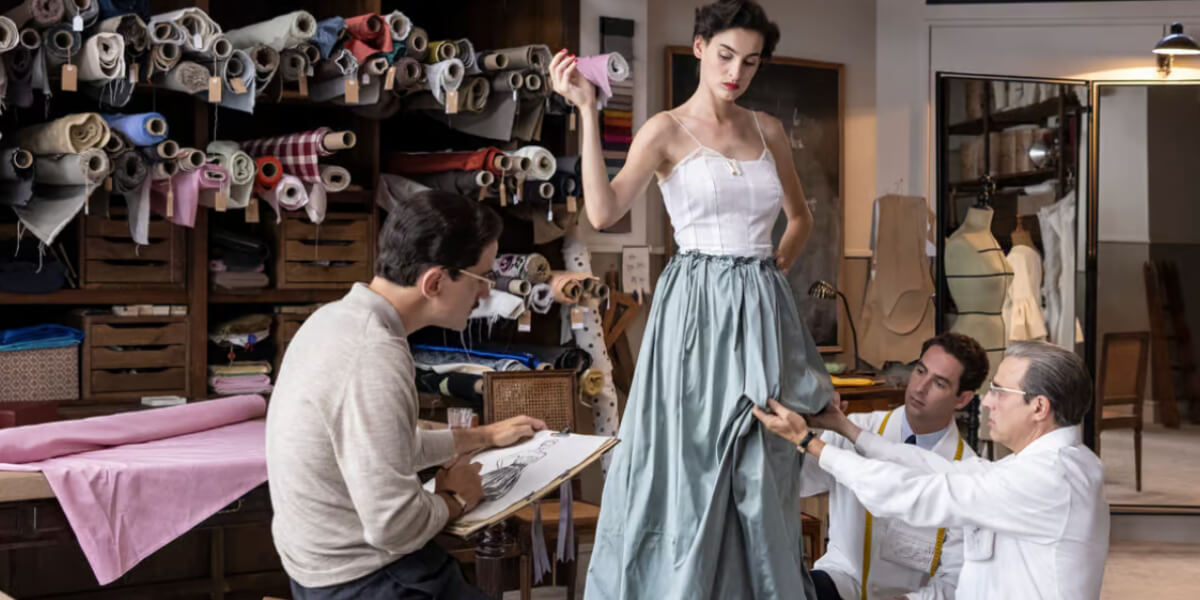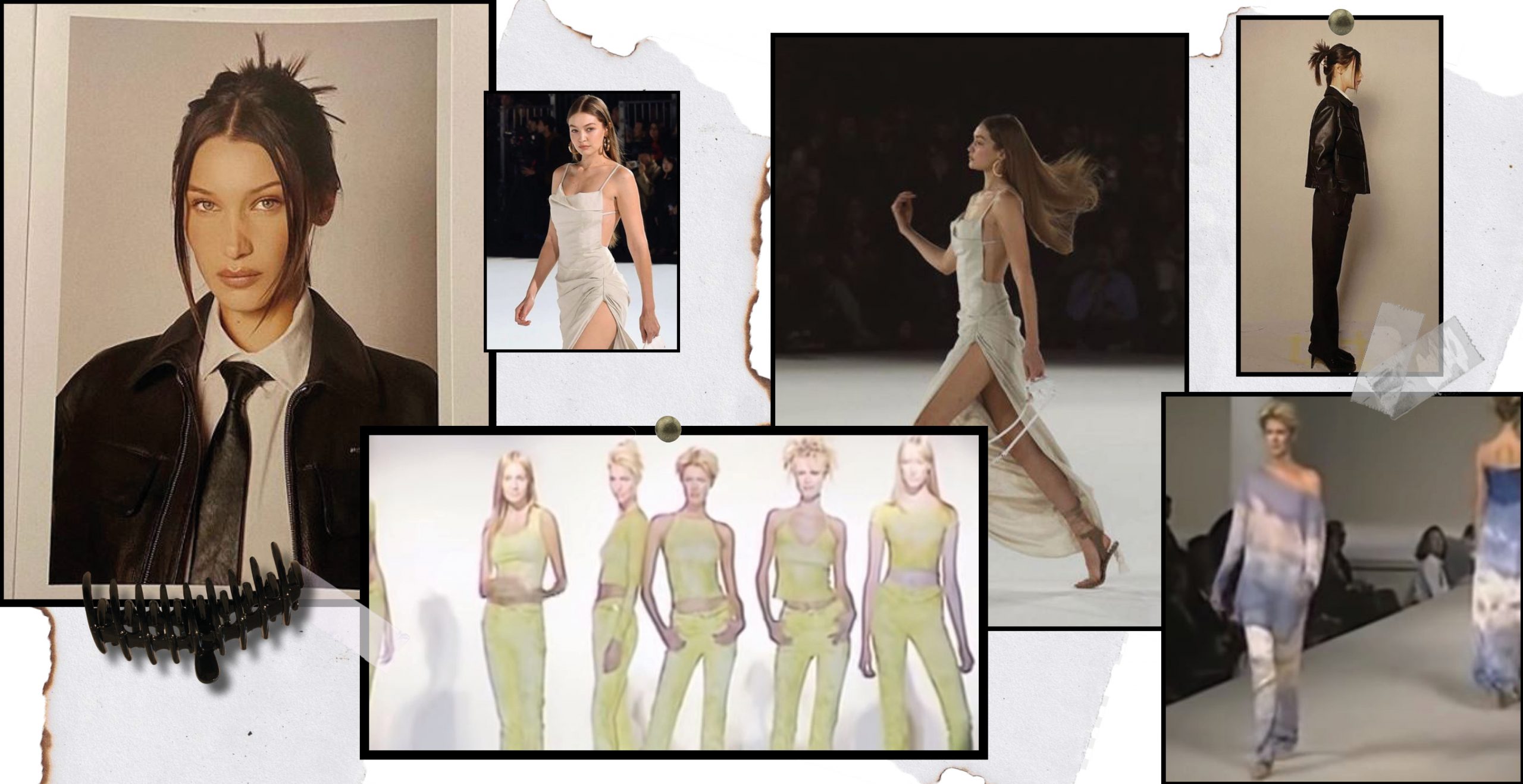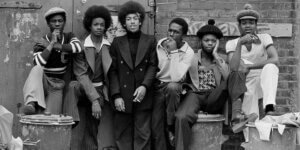Spoilers ahead
If you were to ask today’s fashionistas which brand is their personal number one, you would probably get the same answer: Balenciaga. No wonder, as the brand has become the normcore hub par excellence over the past few seasons, with countless Balenciaga disciples eagerly awaiting each new collection. But there was a time when Balenciaga was different from what makes the headlines today – That’s what the new Cristóbal Balenciaga series on Disney+ is all about.
It was 1937, a time when “haute couture” was not only a promise of craftsmanship but also of aesthetics. Even today, a handful of houses still produce the costumes and dresses in their couture lines according to the strict rules of the highest fashion genre, exclusively by hand, for example, all unique pieces created in a Paris atelier with at least 15 employees. Today, however, even the most expensive designs seem clumsy and ostentatious compared to the past – especially in the case of the marketing brand Balenciaga, which has now grown into a billion-dollar corporation. Anyone watching the biographical mini-series “Cristóbal Balenciaga” with not only an interested but also an experienced eye cannot help but feel a little cultural pessimism: everything used to be better – at least in the field of haute couture, that high, supreme art of tailoring to which Balenciaga, born in 1895 in Getaria, Spain, devoted himself for some 30 years. This new Disney production is about those years, his Parisian years: while the control freak Balenciaga (played by Alberto San Juan) had already achieved great success in his homeland, he arrived in the French capital at the end of the 1930s as a virtual unknown. “Your designs lack personality,” says a Vogue editor of the couturier’s first collection – and so begins the six-part series on a feverish quest to find his own style.
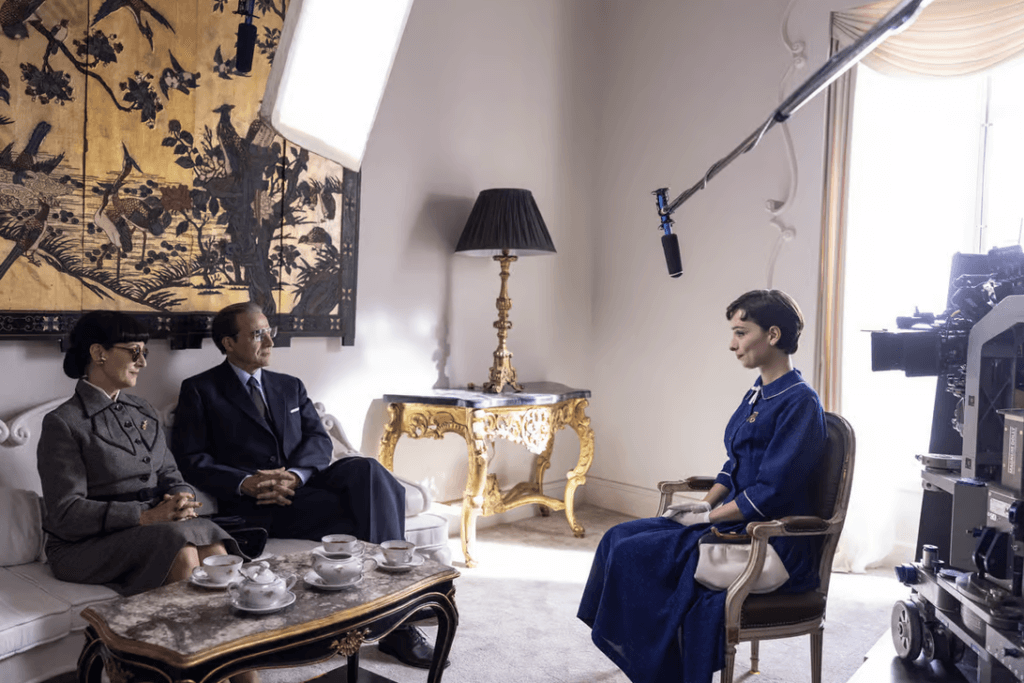
Pairs of expectant eyes are fixed on the closed curtains, hands clapping incessantly. The fashion journalists and clients in the white salon have long since risen to give a standing ovation, but it soon becomes clear that no one is coming. As usual. The scene from “Cristóbal Balenciaga” is one of many that show that the Basque maestro prefers to speak through his fashion. After his fashion shows at 10 Avenue George V in Paris, which sometimes lasted two hours and during which the statuesque models looked over the heads of the spectators with an air of superiority and without a smile on their faces, the curtain was closed and Balenciaga stayed out of the limelight.
This is certainly one of the reasons why Cristóbal Balenciaga has received far less attention than his contemporaries such as Coco Chanel and Christian Dior, who are well versed in self-promotion. This is set to change with the new Disney+ series. The streaming service has spared no expense for its own Spanish production.
But how does a series based on a designer who rarely appeared in public, who didn’t even take a bow after his shows, turn out? Well: partly fictional.
In a statement, the house of Balenciaga said it was keen to “encourage accuracy and ensure a compelling narrative to reflect Cristóbal Balenciaga’s journey. However, the story remains fictional and a free interpretation of Disney+. Balenciaga is not accountable for exact accuracy, timeline nor artistic choices.”
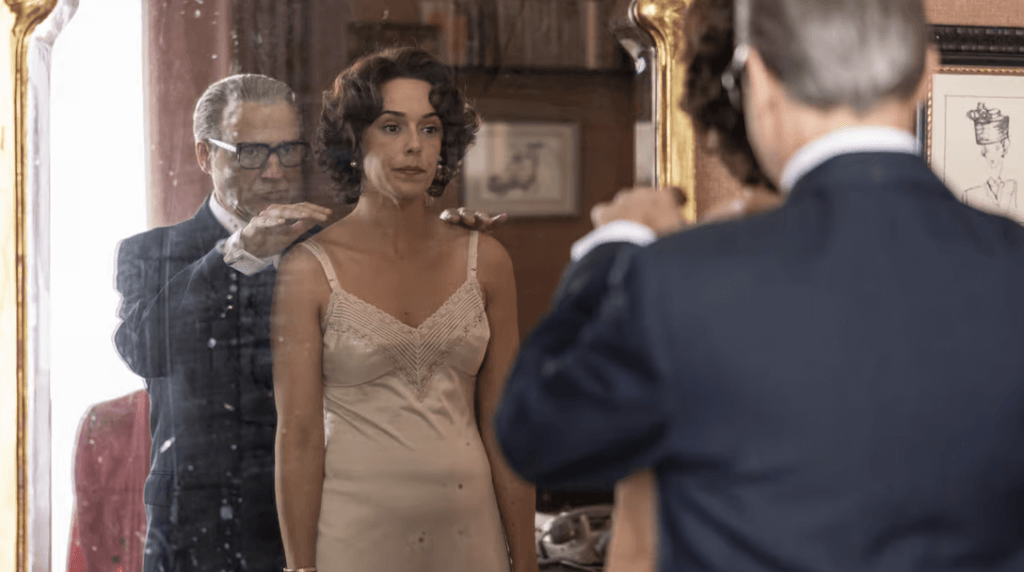
Written and conceived by Lourdes Iglesias, shot on location in Paris and Spain, the series is one of the first fruits of Disney+’s Spanish arm. It is entirely in French, Spanish and Basque which offers an air of authenticity lost when, in other shows, hackneyed ‘Allo Allo accents are affected by English speaking actors.
The show is set on the grey, overcast day in Paris of the 1971 funeral of Coco Chanel, where Prudence Glynn (played by the excellent Gemma Whelan), the admirably persistent fashion editor of The Times, has spotted an opening to get close to the reclusive, and by then retired Balenciaga. The designer was averse to the press, and had never given an interview, Glynn was doggedly determined to get the scoop. Impressively, she succeeded, the six episodes follow their conversations as the designer reflects on his life and thirty year career in Paris.
In reality, the interview was short and held at Glynn’s Parisian country house and in it the real Balenciaga gave little away; it was however still billed as a world exclusive in 1971.
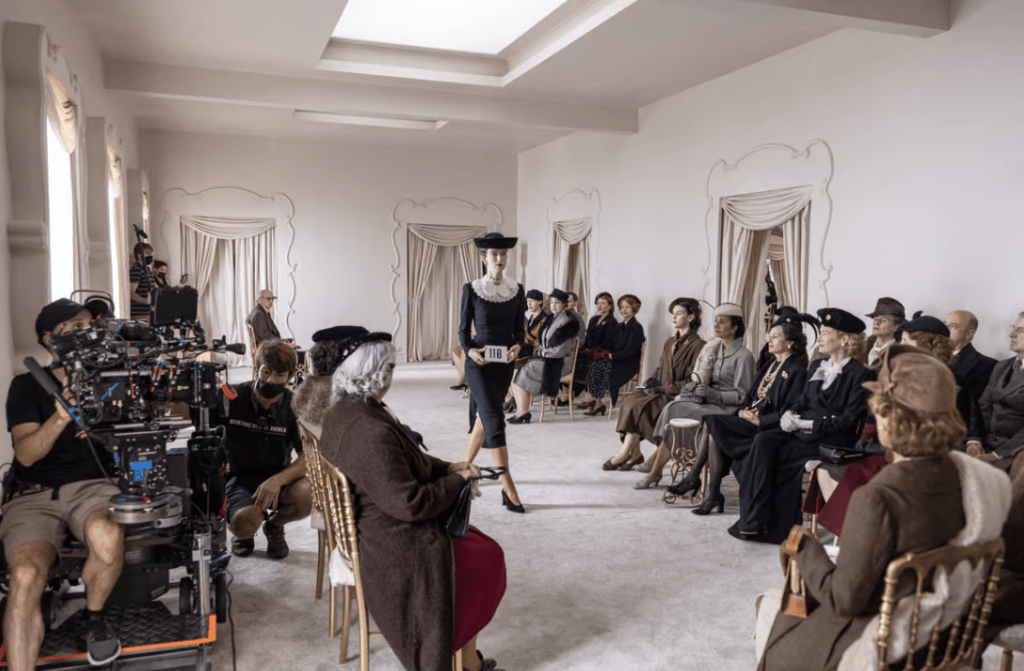
He is shown newly emigrated to the city in 1937, having fled from the Spanish Civil War, opening his own house, racked with insecurity and doubt, vexing over his perceived rivals, nervously inserting himself into Parisian high society. He is an obsessive workaholic perfectionist, he shouts in frustration at his seamstresses and business partners, he agonises over sleeve lengths and the placement of pleats.
It is a period rife with starry names. Anouk Grinberg’s Coco Chanel is perfectly animated, equal parts sharp, gossipy and bitchy. “Don’t forget this is the jungle darlings, don’t expect my help, we’re rivals now” she teases her friend Balenciaga at a party with Harper’s Bazaar’s legendary, exacting editrix Carmel Snow.
Haute Couture in Paris in the 1930s was a serious employer, so when the Nazis occupied the city its future was put into jeopardy. A meeting is shown with all its major names gathered for a meeting with the Chambre Syndicale de la Haute Couture (the body which ran the industry) to discuss what they should do – there’s Chanel, Vionnet, Schiaparelli, Poiret, Lanvin, Molyneaux, Piguet, Jacques Fath Madame Grès and Lelong – a fashion nerd’s Roman empire of name-spotting.
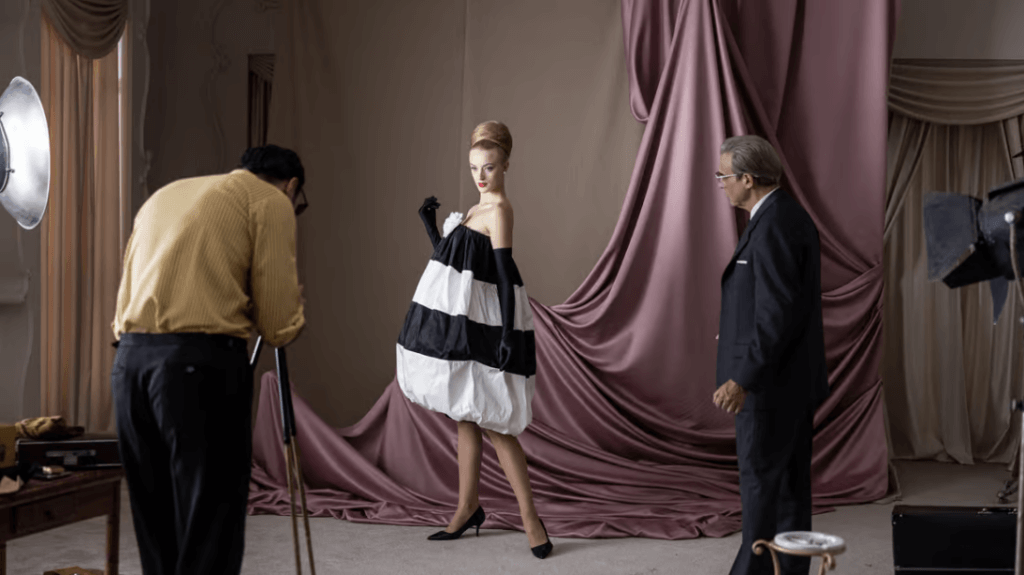
Somewhat controversially, in a bid to survive, Balenciaga stayed open. He travels back and forth to Spain to smuggle in fabric; his clients are no longer the elegant Rothschilds but his show audiences are now a “festival for bad taste”. “High fashion has always served the elite classes” he tells Glynn. “It wasn’t about collaboration it was about survival.” The power of the fashion industry then is underscored by the Nazi fashion police who shut him down for three months, sanctioned for “inciting rebellion through provocative hats’”.
The war done, the mighty figure of Christian Dior looms over Balenciaga, and a new rivalry for the attention of the high society ladies who can afford their work is created. The series blends politics with aesthetics, charting the rise of the modern fashion era, and with it the demise of this rarefied world of haute couture. It certainly provokes questions about the legacy of these grand houses which reverberate today, and what these lofty founders might make of their ‘brands’ now. “Can you imagine people making Picassos with Picasso” he quips to Glynn when considering whether anyone else could have continued on with his house. It closed when he retired in 1968, but was sold in the 1980s by his nieces and nephews and resurrected.
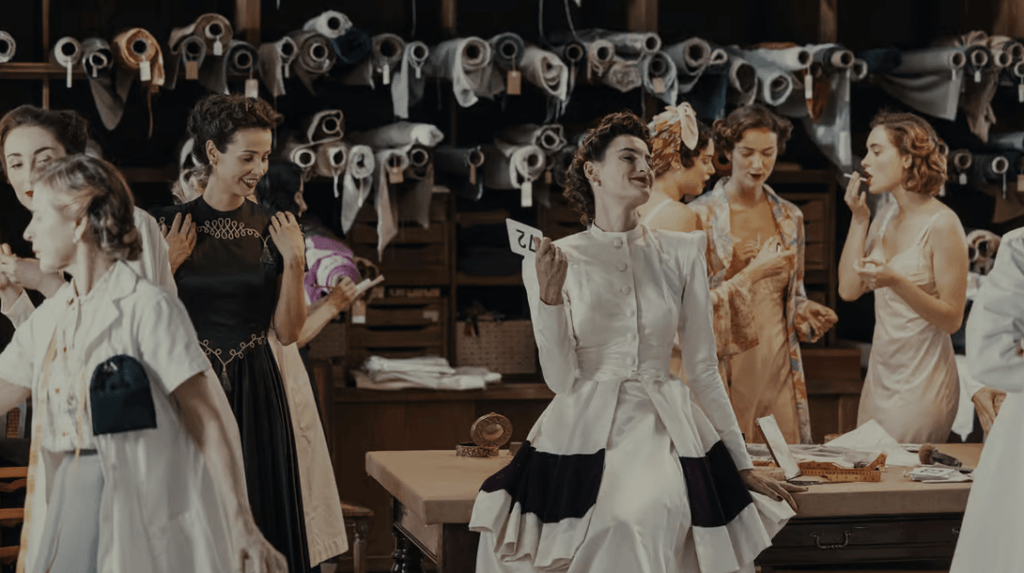
The trio of directors Aitor Arregi, Jon Garaño and Jose Mari Goenaga have several Goya nominations between them, and the series was written by Lourdes Iglesias. Actor Alberto San Juan, who gives an impressive performance in the lead role, has studied fashion design and French. And, of course, there is the wardrobe: German costume designer Bina Daigeler (Tár, Narcos) researched both the Balenciaga archives and the Balenciaga Museum in his home town of Getaria.
Together with her partner Pepo Ruiz Dorado, she has recreated more than 70 of his dresses. Many of them are impressive, but they do not quite reach the sculptural splendour of Balenciaga’s work: he often draped them directly on the body and used his own gazar fabric, developed in the 1960s with Swiss silk merchant Gustav Zumsteg (played in the series by Simon Kirschner). They fit into a lavish historical setting that stretches from Paris to Madrid to New York City, and from Balenciaga’s studio to his apartment. If the couturier was practised in his restraint, the series of the same name is certainly not.
The six 50-minute episodes cover more than three decades and a wealth of historical and personal events. They begin with Balenciaga’s first Paris show in 1937 and follow his not-so-smooth rise through the French and international fashion worlds.
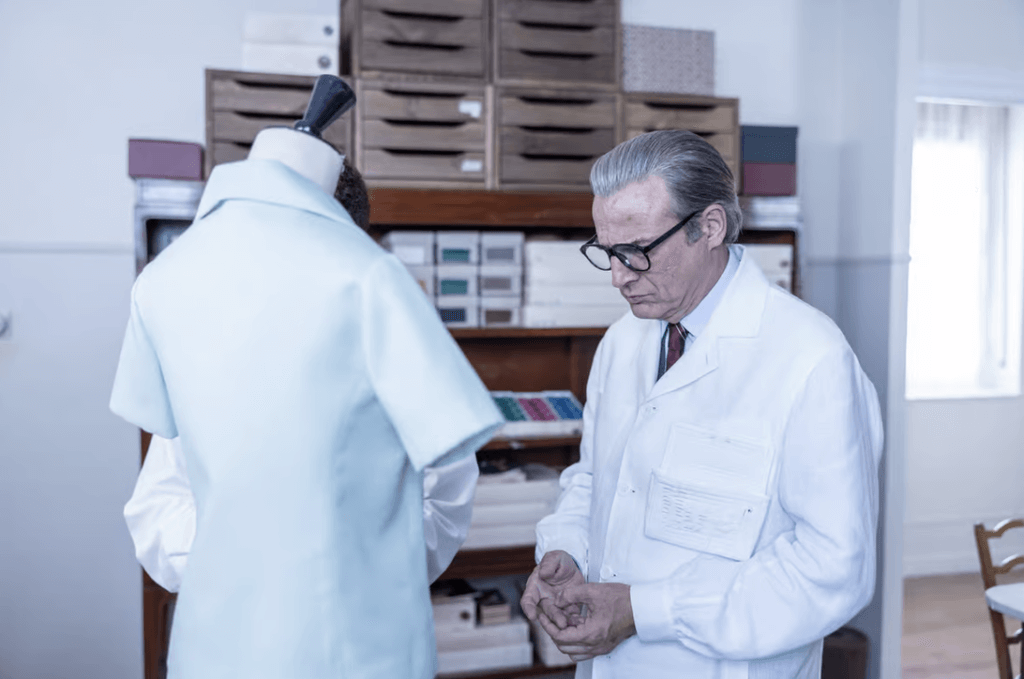
The whole narrative is framed by the extensive interview Balenciaga gave to British journalist Prudence Glynn (played by Gemma Whelan) in 1971. Many scenes and dialogues – in the original French, Spanish and Basque – might be fictional, but the key dates and personal relationships are accurate.
The life and work of Cristóbal Balenciaga can hardly be told any other way: The austere, quiet artist, known not for pomp but for pragmatism, for intelligence and sophistication, round shoulders, dropped waists, a virtuoso play with volumes and a sense of craftsmanship. “He is the last true tailor,” Coco Chanel will say in the series – “the rest of us are just designers.”








